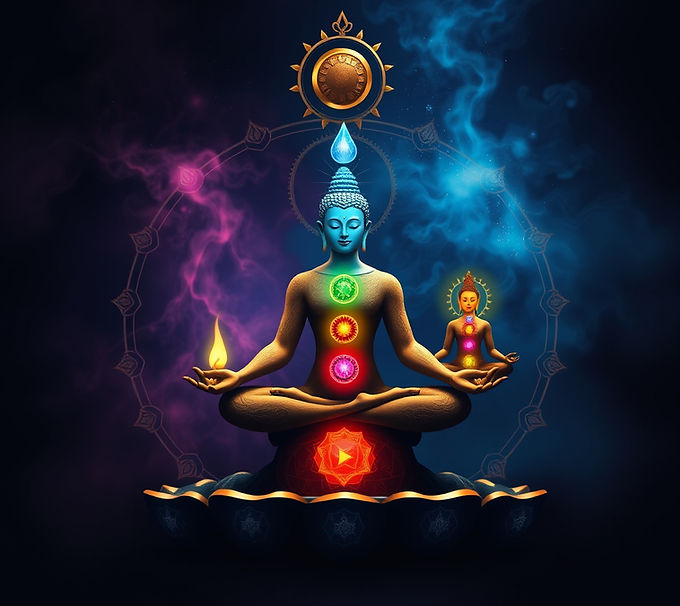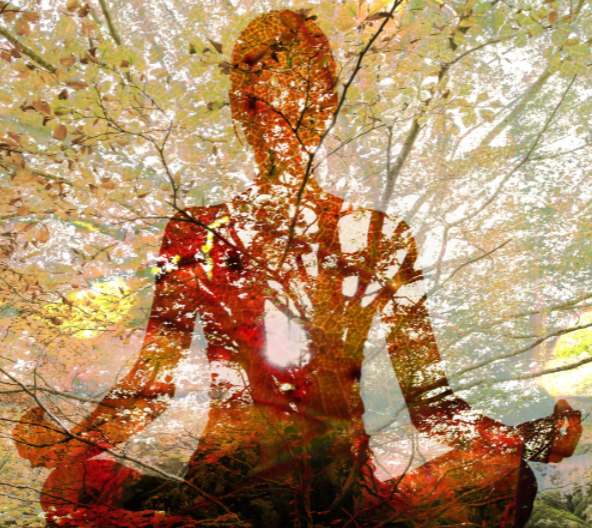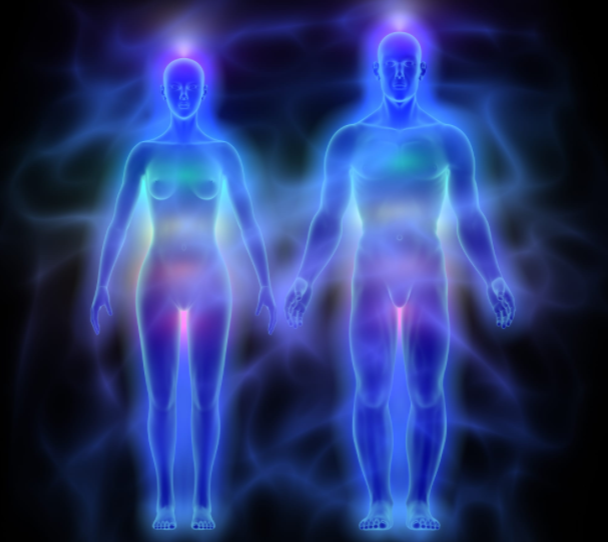
Informational Resources
This is where you will learn valuable information on what Holistic Wellness is all about.

Chakras
Chakras are believed to be centers of spiritual power and energy. The word "chakra" is derived from Sanskrit, meaning "wheel" or "disk," and these energy centers are thought to be spinning wheels or vortexes of subtle energy.
The idea is that these chakras need to be balanced and aligned to maintain physical, mental, and spiritual well-being. Practices such as meditation, yoga, and energy healing are often used to help balance and open the chakras.
The 7 Chakras
The concept of the seven chakras is rooted in ancient Indian spiritual traditions, particularly in Hinduism and later adopted in various forms of yoga and alternative medicine systems. Chakras are believed to be energy centers within the subtle body, interconnected along the spine, and each associated with specific qualities and functions. Here is a brief overview of the seven main chakras:
Root Chakra (Muladhara):
● Location: Base of the spine
● Color: Red
● Element: Earth
● Associated with: Survival, stability, grounding, basic needs, and physical energy
Sacral Chakra (Svadhisthana):
● Location: Lower abdomen, below the navel
● Color: Orange
● Element: Water
● Associated with: Creativity, emotions, sexuality, and relationships
Solar Plexus Chakra (Manipura):
● Location: Upper abdomen, around the navel
● Color: Yellow
● Element: Fire
● Associated with: Personal power, self-confidence, willpower, and digestion
Heart Chakra (Anahata):
● Location: Center of the chest
● Color: Green (sometimes associated with pink)
● Element: Air
● Associated with: Love, compassion, forgiveness, and relationships
Throat Chakra (Vishuddha):
● Location: Throat
● Color: Blue
● Element: Ether (Space)
● Associated with: Communication, self-expression, and truth
Third Eye Chakra (Ajna):
● Location: Between the eyebrows, slightly above
● Color: Indigo
● Element: Light
● Associated with: Intuition, insight, imagination, and spiritual awareness
Crown Chakra (Sahasrara):
● Location: Top of the head
● Color: Violet or white
● Element: Thought
● Associated with: Spiritual connection, higher consciousness, and enlightenment
The idea is that these chakras are spinning wheels of energy, and when they are balanced, the individual experiences overall well-being and harmony. Various practices, such as meditation, yoga, and energy healing, aim to balance and align the chakras, promoting physical, emotional, and spiritual health.

Reiki
Reiki is a form of alternative therapy that originated in Japan in the early 20th century. The word "Reiki" is a combination of two Japanese words: "rei," which means universal, and "ki," which means life energy or vital force. Reiki practitioners believe that there is a universal life energy that flows through all living things, and they use specific techniques to channel this energy for healing purposes.
Reiki is a Japanese healing technique used to channel universal life force energy into the patient by means of touch, to activate the natural healing processes of the patient's body and restore physical and emotional well-being.
Discover the Benefits of Reiki…
-
Pain Relief (migraines, arthritis, sciatica etc.)
-
Speed up recovery (pre/post- surgery)
-
Improves focus
-
Relieves Anxiety and Depression
-
Aids in the Grieving Process
-
ADD/ADHD
-
PTSD
In the practice of Reiki, a form of alternative therapy originating from Japan, the concept of the seven chakras plays a significant role. Reiki is based on the idea that a universal life force energy flows through all living things, and practitioners use their hands to channel and transmit this energy to promote healing and balance. The chakra system is often incorporated into Reiki sessions as a framework for understanding and addressing energetic imbalances. Here's how the seven chakras relate to Reiki energy healing:
Root Chakra and Reiki:
In Reiki, the root chakra is associated with grounding and stability. Reiki practitioners may focus on this chakra to help clients feel more connected to the earth, secure, and rooted in the present moment.
Sacral Chakra and Reiki:
The sacral chakra in Reiki is linked to emotions, creativity, and relationships. Reiki energy may be directed to the sacral chakra to balance emotions, enhance creativity, and foster healthy connections with others.
Solar Plexus Chakra and Reiki:
Reiki practitioners often work on the solar plexus chakra to address issues related to personal power, confidence, and self-esteem. Balancing the solar plexus chakra with Reiki energy may help individuals regain a sense of control and empowerment.
Heart Chakra and Reiki:
The heart chakra is central in Reiki for promoting love, compassion, and healing. Reiki energy directed to the heart chakra aims to foster emotional well-being, open-heartedness, and the ability to give and receive love.
Throat Chakra and Reiki:
Reiki can be applied to the throat chakra to enhance communication, self-expression, and authenticity. This may help individuals express themselves more freely and communicate with clarity.
Third Eye Chakra and Reiki:
The third eye chakra is associated with intuition and spiritual awareness in Reiki. Reiki energy directed to this chakra may enhance inner vision, intuition, and insight.
Crown Chakra and Reiki:
Reiki practitioners often focus on the crown chakra to promote spiritual connection and higher consciousness. Reiki energy directed to the crown chakra may facilitate a sense of oneness, spiritual awakening, and a connection to the divine.
During a Reiki session, the practitioner may use hand placements or techniques to channel energy to specific chakras, aiming to restore balance and harmony in the client's energy system. It's important to note that the effectiveness of Reiki and its connection to chakras is subjective and may vary from person to person. While many people report positive experiences with Reiki, scientific evidence supporting its efficacy is still under investigation.

The Connection
The connection between Reiki Healing Treatments and Chakras
Chakras as Energy Centers:
Chakras are specific points or centers in the body where energy is believed to concentrate. There are seven main chakras, each associated with different aspects of human experience. These chakras are often aligned along the spine, from the base to the crown of the head.
-
Balancing Chakras with Reiki: Practitioners often use Reiki to balance and align the chakras. Each chakra is believed to correspond to specific areas of the body, and practitioners may focus on those areas during a session. The intent is to clear any blockages or imbalances.
-
Holistic Healing: The combination of Reiki and chakra work is seen as a holistic approach to healing. By addressing both the universal life force energy with Reiki and the specific energy centers with chakras, practitioners aim to promote physical, emotional, and spiritual balance.
-
Reiki Infusion & Chakra Healing: Crystals are excellent conduits for Reiki Energy - crystals already hold energetic qualities, and by giving Reiki to the crystals, this energy is amplified. The pendants rest on the heart space, Anata, which is the fourth Chakra, responsible for love for yourself and others, compassion, empathy, and forgiveness. You will notice when adorning Pendants & Such these feelings are softly emphasized and your heart space will expand. For Reiki practitioners, wearing these pendants during self-treatment amplifies the healing, as it will when giving treatments to others, as well!

Intuitive Reiki Practitioner
I'm an Intuitive Reiki Practitioner...
Intuitive mediums differ from psychics in that they don’t receive information via traditionally recognized means such as sensing it in the air around them. Rather than hearing the thoughts of spirits, they have clear hearing of spirits speaking “in their heads” or get a clear feeling of the emotions of those on the other side or of the world around them. These voices and feelings may not be audible to other people but it is startlingly clear and specific for the intuitive medium.
An intuitive medium can rely on many different tools and techniques to communicate with spirit including: tarot cards, runes, crystals, pendulums, automatic writing, or painting are all examples of intuitive mediumship. Communication may come across as signs, colors, images, animals, noises, smells, and many other ways. Most communications come across as pieces from either the past, present and/or future.
What I encounter in my communications within sessions, may not immediatly make sense to you. It will come as puzzle pieces for you to put together after you've had some time to sit, think, and process what you recieved.
I am not a Psychic Medium.

Meditation
Meditation, often thought of as a path to self-awareness and compassion, can also be a path to better health. Practiced for thousands of years in Hindu, Buddhist, Zen/Chan and Taoist communities, people use meditation today to cope with stress and worry in a busy world. It can help bring calm and insight to people who often feel anxious.
Meditation refers to a set of techniques to enhance attention, emotional awareness, kindness, compassion, sympathetic joy, and mental calmness even in difficult situations. Some people find that regular meditation practice helps them be kind to themselves and more caring towards others. It can also teach you to be a little less reactive when tough situations arise. Meditation is a practice in which an individual uses a technique – such as mindfulness, or focusing the mind on a particular object, thought, or activity – to train attention and awareness, and achieve a mentally clear and emotionally calm and stable state.
10 reasons to meditate
Research has documented many health benefits of regular meditation practice. Here are 10 of them:
-
Reduced stress: Meditation may decrease stress. It can also improve symptoms of stress-related conditions, including irritable bowel syndrome (IBS), post-traumatic stress disorder (PTSD) and fibromyalgia.
-
Improved memory: Better focus through regular meditation may increase memory and mental clarity. These benefits can help fight age-related memory loss and dementia.
-
Increased attention: Meditation helps with attention span, allowing you to stay focused longer.
-
Enhanced willpower: Meditation develops the mental discipline needed to avoid unhelpful habits.
-
Better sleep: Meditation can shorten the time it takes to fall asleep and improve sleep quality.
-
Less pain: Meditation can reduce pain and boost emotion regulation. Together with medical care, this may help treat chronic pain.
-
Lower blood pressure: Blood pressure decreases during meditation and over time in people who meditate regularly. This can reduce strain on the heart and blood vessels and help prevent heart disease.
-
Less anxiety: Regular meditation helps reduce anxiety. It can also help with mental health issues like social anxiety, fears and obsessive-compulsive behaviors.
-
Less depression: Meditation can help reduce the occurrence of depression.
-
Greater compassion: Meditation can help you better understand yourself, find your best self, and increase positive feelings and actions toward others.
How to meditate
There are hundreds of different meditation techniques that vary from simple to more complex. It’s best to start with a simple practice that you can work into your regular routine over time. You can do this daily at the same time, even if it’s just a few minutes to start out. Over time, you will build discipline and skill with practice. Follow these steps for meditation:
-
Sit or stand in a calm, quiet place with eyes closed or gaze down.
-
Set a time limit, especially if you’re just starting out. It can be five or 10 minutes.
-
Feel your body. Make sure you are stable and in a position you comfortably stay in the whole time.
-
Focused attention practice: Focus your attention on your breathing in two ways. First, you can observe your torso expanding and contracting. Or you can feel the sensation of breath inside your nostrils with each inhalation and exhalation. When your breath focus is stable, you can shift to noticing thoughts, emotions, sensations, and sounds as they rise and dissolve in your mind.
-
Notice when your mind wanders, which will happen. Don’t be hard on yourself when your mind goes elsewhere – just note where your mind drifted and then gently return your attention to your breath.
-
Close with remembering our common humanity. Think this thought: “May I and all living beings be well, safe, nourished, and healthy.”

Breathwork
What is breathwork?
Breathwork refers to breathing techniques that intentionally channel and focus on the breath. For thousands of years, Eastern medicine practices, including Ayurveda and traditional Chinese medicine, have employed breathing techniques to calm the body and the mind.
“Our minds tend to be very active, often thinking about the past and worrying about the future instead of residing in the present moment,” Dr. Young explains. “This can lead to the activation of stress hormones for extended periods of time, which can have adverse effects on the body. Chronic stress increases the risk of a number of diseases and disease processes in the body.”
It’s no secret that mental and emotional stress can manifest in physical ways, playing a role in issues like:
-
Aches and pains.
-
Digestive problems.
-
Headaches.
-
High blood pressure.
-
Insomnia.
-
Muscle tension.
-
Sexual dysfunction.
-
A weakened immune system.
But stress management techniques — including breathwork — are one way to help you step back from the chaos and keep your mind and body healthy.
Breathwork benefits
Breathwork helps calm you down and move your body and mind out of fight-or-flight mode. To understand how, though, you need to know about your autonomic nervous system, which consists of two parts:
-
Your sympathetic nervous system is responsible for your body’s “fight-or-flight” response. This system’s activity increases when you’re stressed or in danger.
-
Your parasympathetic nervous system is the “rest-and-digest” part of your brain, responsible for relaxing your body after periods of stress or danger.
Fight-or-flight mode is helpful when you’re being chased by a bear or fleeing a burning building. But these days, many of us are in a mental fight-or-flight mode even when our bodies aren’t under physical duress — think major work deadlines, upsetting news headlines, financial woes, arguments with your spouse and more.
We need our sympathetic nervous system to be aware of danger in our environment, but in today’s society, we’re too often in fight-or-flight mode when we’re not actually in danger. We need to be able to tap into our parasympathetic nervous system to be able to calm sensations of stress.
Breathwork, then, is a way to activate your body’s parasympathetic nervous system and help you de-escalate and de-stress. That can also lead to all kinds of positive feelings.
Breathwork helps us with focus and energy, which can lead to a better quality of life where there’s space for joy and fun. If we’re constantly in a state of stress and tension, it’s very hard to find those important qualities in life.
Joy and fun? Yes, please! Plus, breathwork is one of the most accessible wellness practices out there. Anyone can do it, regardless of age or other medical conditions, so long as you find the breathing techniques that work best for you.

Reflexology
What Is Reflexology?
Reflexology is a type of therapy that uses gentle pressure on specific points along your feet (and possibly on your hands or ears as well) to help you feel better. The theory is that this eases stress, and that helps your body work better. It’s also known as zone therapy.
The way reflexology connects spots on the outside of your body to the inside is a bit like acupuncture and acupressure. But those therapies use points all over your body, not just on your feet, hands, and ears. And while reflexologists do use their hands, it isn’t a form of massage.
Like those other therapies, though, reflexology is complementary to medical treatments. It can be done alongside traditional care, but it’s not an alternative to it, and reflexologists don’t diagnose or treat illnesses.
Reflexology Benefits
Reflexology may help you feel less stressed, more relaxed, and more energized. But the benefits might go deeper if you have certain health issues.
Some people with medical conditions find that they feel less pain and discomfort if they have less stress, and reflexology may help with that. Researchers reviewed 17 studies of the psychological benefits of the therapy and found that it boosted feelings of well-being and made it easier for people to manage their conditions.
More research is needed to see if reflexology can have a direct effect on specific conditions, but some people claim it may ease:
Anxiety among people who've had heart surgery
Pain during labor
Arthritis pain
Some symptoms of multiple sclerosis, like fatigue and uncomfortable skin sensations
Emotional and physical pain caused by cancer
It may also help:
Improve sinus issues
Relieve back pain
Ease constipation

Sound Bath Healing
A sound bath is a meditative experience that involves lying down and listening to resonant sounds, often created by instruments like singing bowls, gongs, and chimes. The goal is to immerse participants in sound waves that create vibrations that impact the body and mind, leading to a state of relaxation and meditation. Some people refer to sound baths as a healing practice, and claim that the vibrations correspond to specific energy centers in the body.
Some say that sound baths can have the following benefits:
-
Feeling calmer
-
Less stress
-
Looser muscles
-
Pain relief
-
Better sleep
-
Improved mood
-
and Better body awareness.
During a sound bath, the brainwave state can alter from normal waking state (beta) to relaxed state (alpha), dreamlike state (theta), and even restorative state (delta). As the mind and body relax, the heart rate and blood pressure decrease and breathing becomes deeper.
However, while studies suggest that sound baths may help people relax, there is no evidence that they heal or treat any medical condition. Reactions to the sounds are also unique to the person's own physical and emotional state.

doTERRA Essiential Oils
What Are Essential Oils?
What are essential oils? Essential oils are the essence of a plant, a gift from the earth, distilled and prepared for you to bring the power of nature into your home.
Inside many plants—hidden in roots, seeds, flowers, bark—are concentrated, highly potent chemical compounds. These natural compounds are essential oils.
Essential oils give a plant its scent, protect it from hazardous environmental conditions, and even assist it with pollination, among other important functions and benefits.
How Do Essential Oils Work?
When you open a bottle of pure, unadulterated essential oil, your senses are instantly filled with its potent aroma, even from a distance. What your nose detects are the naturally occurring elements of the essential oil.
Every essential oil varies in its natural makeup, so aromas and benefits are also unique. For example, Lavender essential oil includes elements that make it effective for soothing skin irritations, and promoting a restful environment for sleep.
Meanwhile, when taken internally, Frankincense oil supports immune, nervous, and digestive systems, and aids in healthy cellular function.*
Use Essential Oils to Transform Your Life
So many of the products we use in our day-to-day lives are filled with synthetic chemicals. These unnatural products can weigh us down and even negatively influence the way we think, feel, and live.
Pure essential oils offer an alternative to synthetic products. Essential oils are more than just natural products. Each with a unique chemical makeup, essential oils have dozens of benefits. Essential oil benefits are determined by the chemistry of the plants. If these natural chemicals are properly extracted, they can be used to help you in your daily life.
Essential Oil Uses and Benefits
Essential Oils Aren't a New Trend
Do you feel like you've started to hear a lot about essential oils in the last few years? While you might think essential oils are a new, hip trend, plant extracts and plant-based products are deeply rooted in the traditions of the past. Essential oils have been used by ancient civilizations across the globe for:
-
Aromatherapy
-
Personal care
-
Healthcare practices
-
Religious ceremonies
-
Beauty treatments
-
Food preparation
What Are Essential Oils Used for Today?
Historically, essential oils were used as part of cultural practices and traditions. However, we now have increasing scientific evidence and research showing that essential oils can be effectively and safely used in a wider range of day-to-day practices and routines for amazing benefits. Today, essential oils can be used for cooking, household cleaning, personal hygiene, and much, much more.*
When you use essential oils, you'll have more natural solutions and fewer toxic, synthetically manufactured products in your life and home.
What Are Essential Oils Good For?
Since long ago, people have used essential oils and plant parts to improve their lives. We’ve continued to explore their benefits today, finding that essential oils can be integrated into daily life for a plethora of purposes.
What Makes Essential Oils Effective?
Some essential oils are soothing, toning, and grounding, while others are energizing, warming, and renewing—but all essential oils are natural. The variety of essential oils allows you to naturally and effectively address your specific concerns.
With so many essential oils available, you can tailor them to your specific wants and needs rather than be forced to settle for a generic solution. This makes essential oils a popular choice for those looking for the best natural solutions in the modern era. The verstaility of essential oils is part of what has made them so popular in recent years. People love that they can use essential oils for a variety of tasks, without having to buy multiple products.
How to Use Essential Oils
How do you use essential oils effectively? Rest assured that you don’t have to be an expert to enjoy the wide array of benefits that essential oils offer. All you really need is a basic understanding of how to apply essential oils safely and simply as part of your daily routine.
If you’re ready to learn more, we can show you how to use essential oils. Once you learn how to use essential oils, you’ll be on your way to a healthier lifestyle.

Disclaimers
Reiki treatments are not a substitute for medical diagnosis and treatment, and no medical claims are made regarding these treatments. People with health concerns and/or serious conditions should consult their doctor.
Reiki is the art of natural healing, not the practice of medicine. Reiki is intended to be a supplement to, and not a substitute for, professional medical care and treatment. In the case of any serious medical ailment of condition, you should always consult your doctor for advice.
AromaTouch Technique (ATT) & Symphony Of The Cells ( SOTC ) are clinical approaches to applying essential oils. ATT & SOTC are intended to be a supplement to, and not a substitute for, professional medical care and treatment. ATT & SOTC are not regular full body massages, they are roughly 30 minutes to 1 hour sessions. The essential oils applied along energy lines and reflexology points stimulates homeostasis and balance the body.
A Reflexologist does not practice medicine. A Reflexologist does not diagnose, treat or cure any specific illness. A Reflexologist does not prescribe or adjust medication.
Meditations & Breathwork Techniques are intended to be a supplement to, and not a substitute for, professional medical care and treatment. In the case of any serious medical ailment of condition, you should always consult your doctor for advice.
ALL sessions are meant to aid in your healing process.